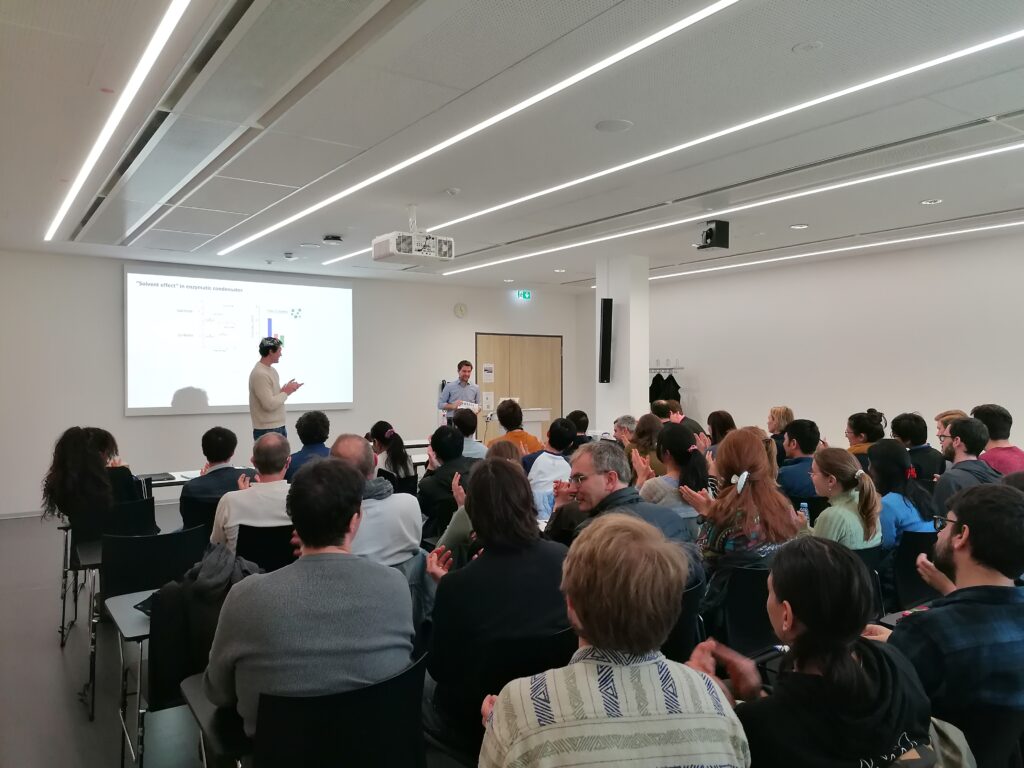Cells can coordinate biochemical activity in space and time through membraneless organelles, also known as biomolecular condensates, which are formed by the phase separation of proteins and nucleic acids. We investigate how open compartmentalization and the emergent properties of biomolecular condensates at the mesoscale provide unique mechanisms to influence enzymatic reactions and protein aggregation. Our findings reveal effects that extend beyond the local increase in protein concentration due to phase separation, including the impact of interfaces[1][2], heterotypic interactions[2], and the sizes of condensates[3]. We specifically focus on the formation of amyloids from biomolecular condensates of hnRNPA1, a protein implicated in Amyotrophic Lateral Sclerosis (ALS).[1][2]
[1] Linsenmeier M. et al., Nat. Chem., 2023, 15, 1340-1349
[2] Morelli C. et al., Nat. Chem., 2024, 16, 1052-1061
[3] Gil-Garcia M. et al., Nat. Comm., 2024, 15, 3322
On behalf of the IRTG, we are truly grateful for the opportunity to interact and learn with Paolo. We look forward to your continued success!


